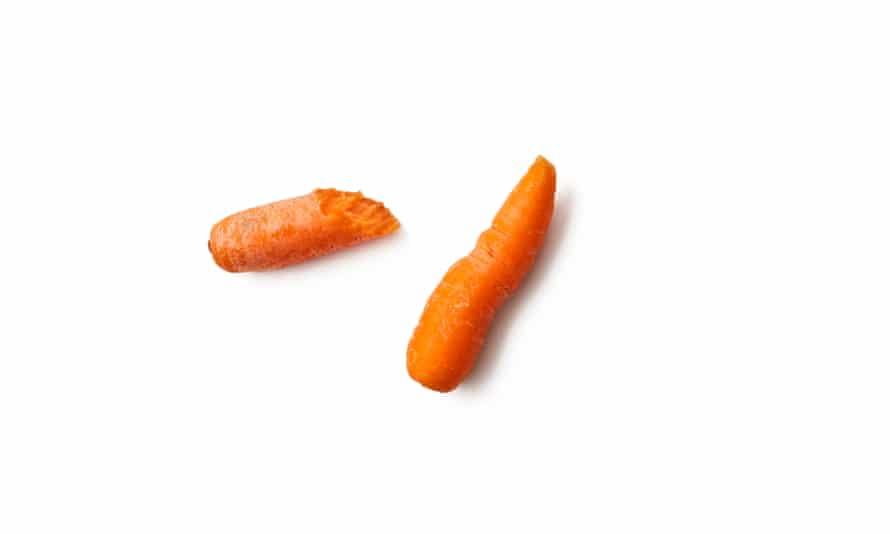
A medieval idea given a new lease of life by wartime rationing, carrots in desserts disappeared as soon as sugar became widely available again, only to pop up in the 1980s as a glamorous American import. It’s fair to say that, these days, carrot cake is a little more decadent than it was under the Ministry of Food, and all the nicer for it.
Prep 45 min
Cook 30 min
Serves 6-8
150g butter, plus extra for greasing
1 orange
200g carrots
100g pecans, plus a handful extra to decorate
150g soft light brown sugar, plus 50g extra for the icing
3 eggs
200g self-raising wholemeal flour (see step 4)
1 tsp bicarbonate of soda
½ tsp salt
1 tsp ground cinnamon
½ tsp grated nutmeg
100g sultanas or raisins
For the icing
150g full-fat cream cheese (see step 6)
1 lemon
1 Size isn’t everything
Part of the charm of this cake (for me, anyway) is how dense it is with carrots, chopped nuts and other good things, so a slice goes a long way, hence the relatively small size. If you’re looking for a show-stopper, double the quantities and make four layers instead of two.
2 Melt, zest, grate, toast and chop

Melt the butter and set aside. Give the orange a good wash under hot water (particularly if it’s waxed, as most non-organic fruit tends to be), then finely grate the zest (save the fruit itself for another use, or eat it). Scrub and coarsely grate the carrot.
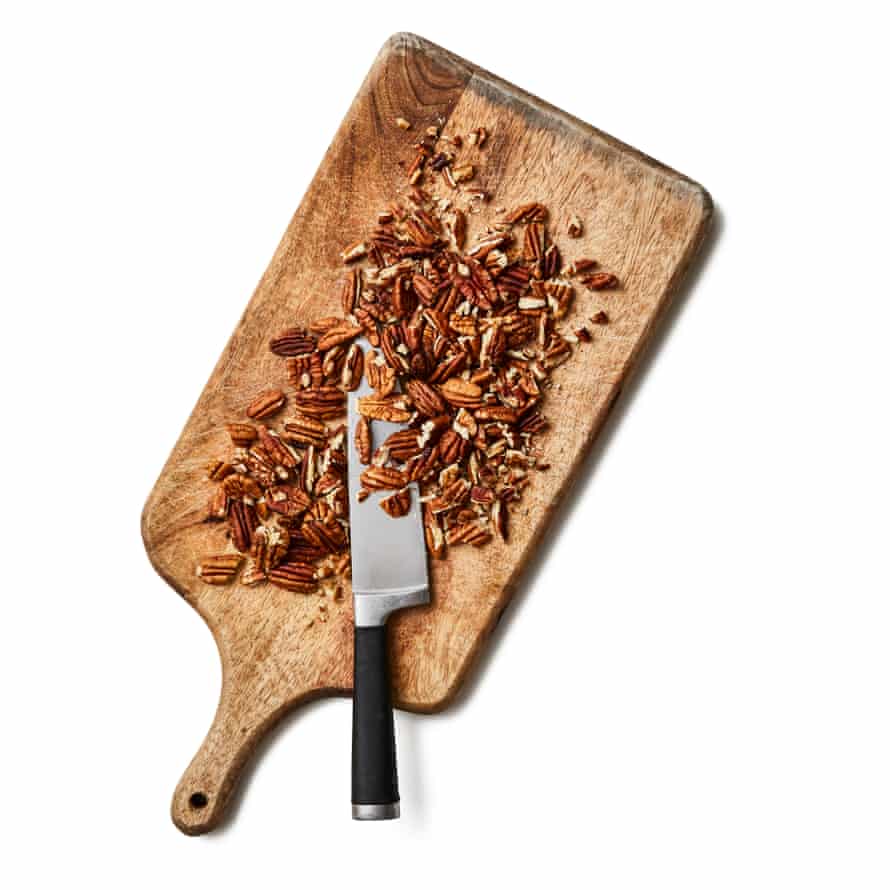
Toast all the pecans in a dry pan, then roughly chop 100g, setting the rest aside for decoration.
3 Start on the batter
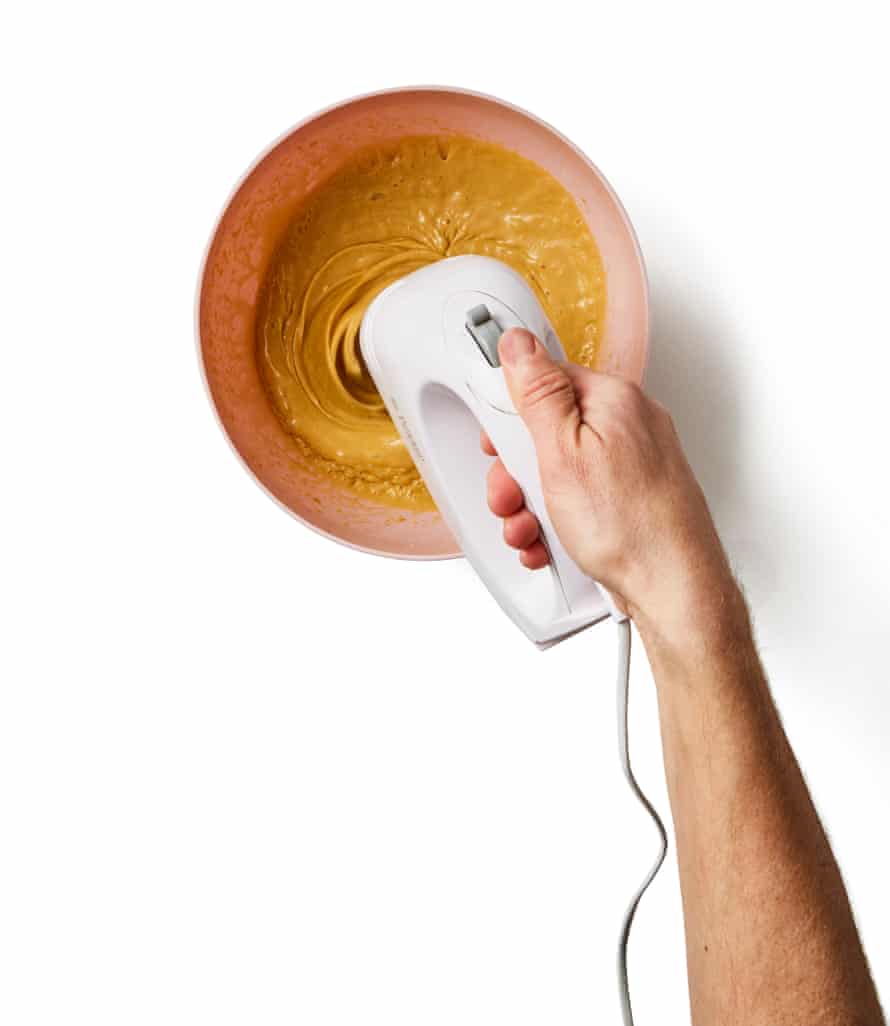
Grease and line two 18cm sandwich tins and heat the oven to 200C (180C fan)/390F/gas 6.
Put the melted and slightly cooled butter in a large bowl, add the sugar and eggs (you could use white sugar here, but the toffeeish flavour of brown works better with the wholesome vibe of the cake), and whisk until almost doubled in volume.
4 Fold in the dry ingredients
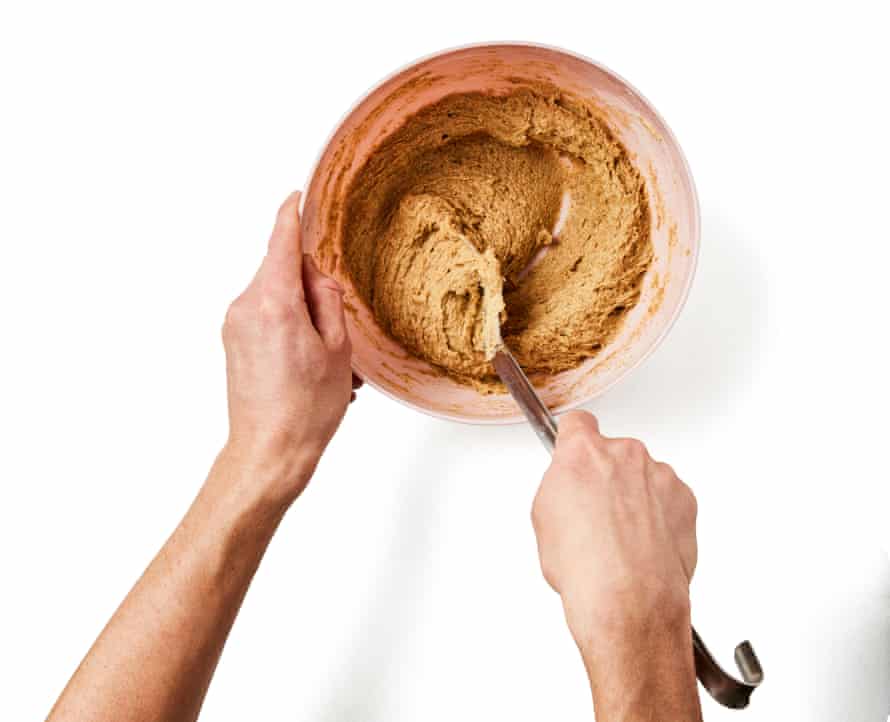
Sift the flour (or use 200g plain wholemeal flour and two teaspoons of baking powder), bicarb, salt and spices into the bowl, then use a large metal spoon to fold very slowly into the egg mixture, taking care to knock out as little air as possible, until you can see no more pockets of flour.
5 Add the carrots, fruit and nuts, and bake
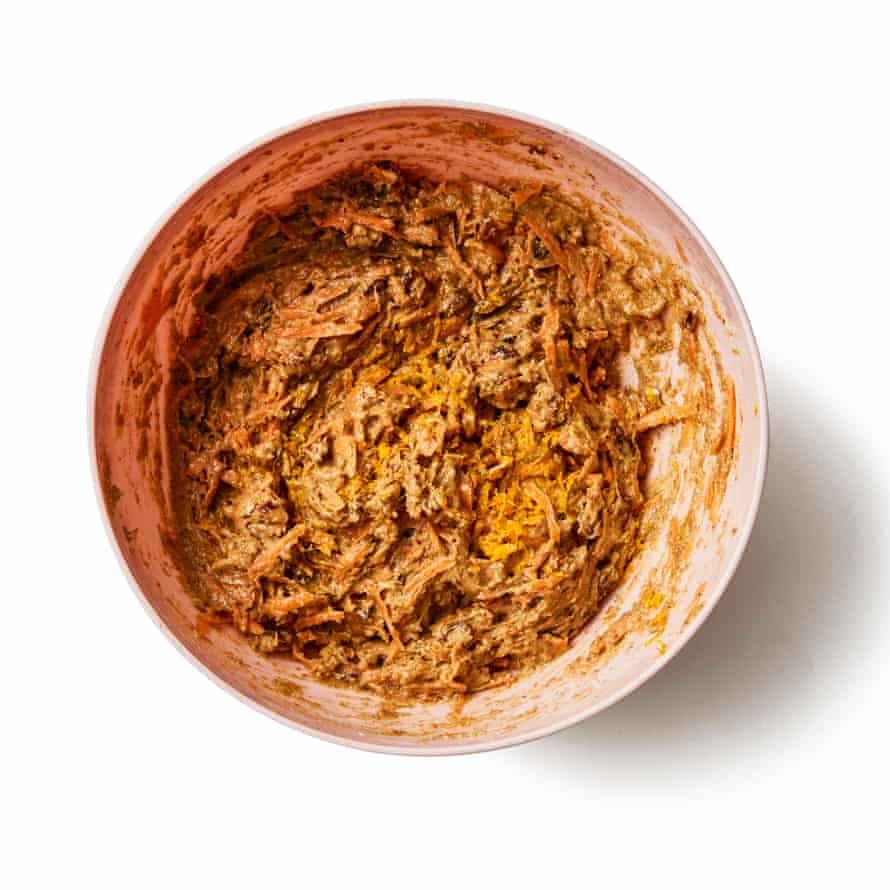
Gently fold in the carrots, orange zest, chopped pecans and dried fruit until well distributed, then divide between the two tins – you may find it helpful to weigh them to ensure they are the same size.
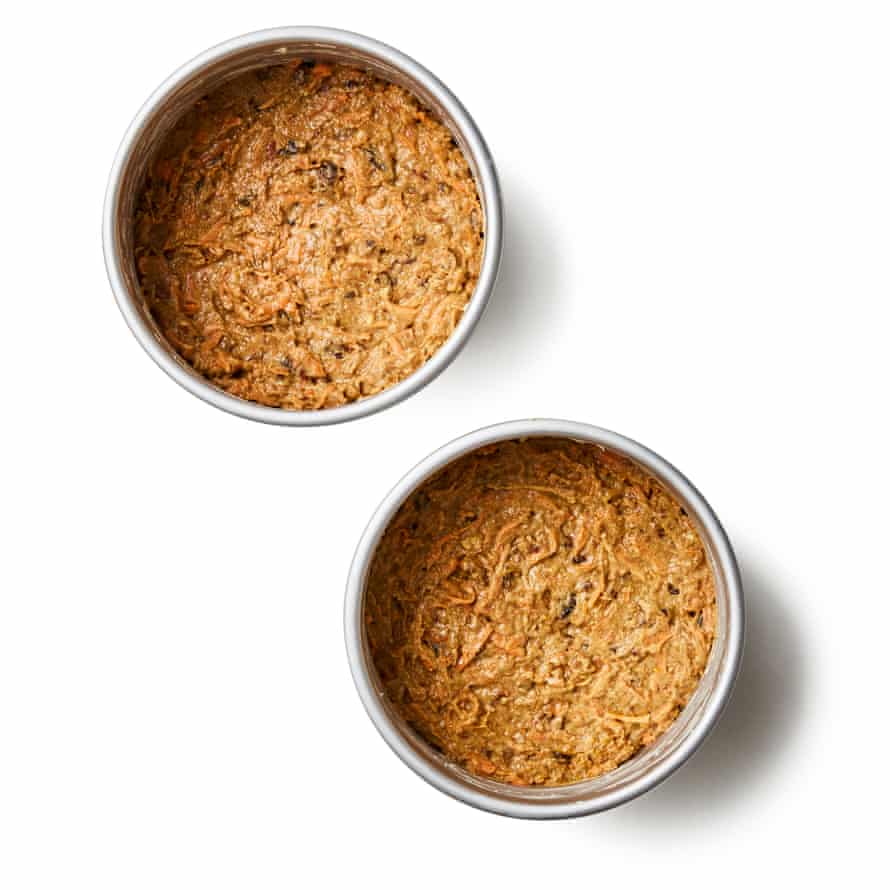
Smooth the top and bake for about 30 minutes, until a skewer poked into the middle comes out dry.
6 Drain the cheese
Meanwhile, make the icing. Drain any excess liquid from the cream cheese (I find the stabilisers added to the UK’s leading brand give it a slightly less satisfying texture than plain cream cheese – own-label or the luxurious Breton stuff would be my preference – but anything apart from, potentially, Boursin would work) and put it in a bowl.
7 Make the icing
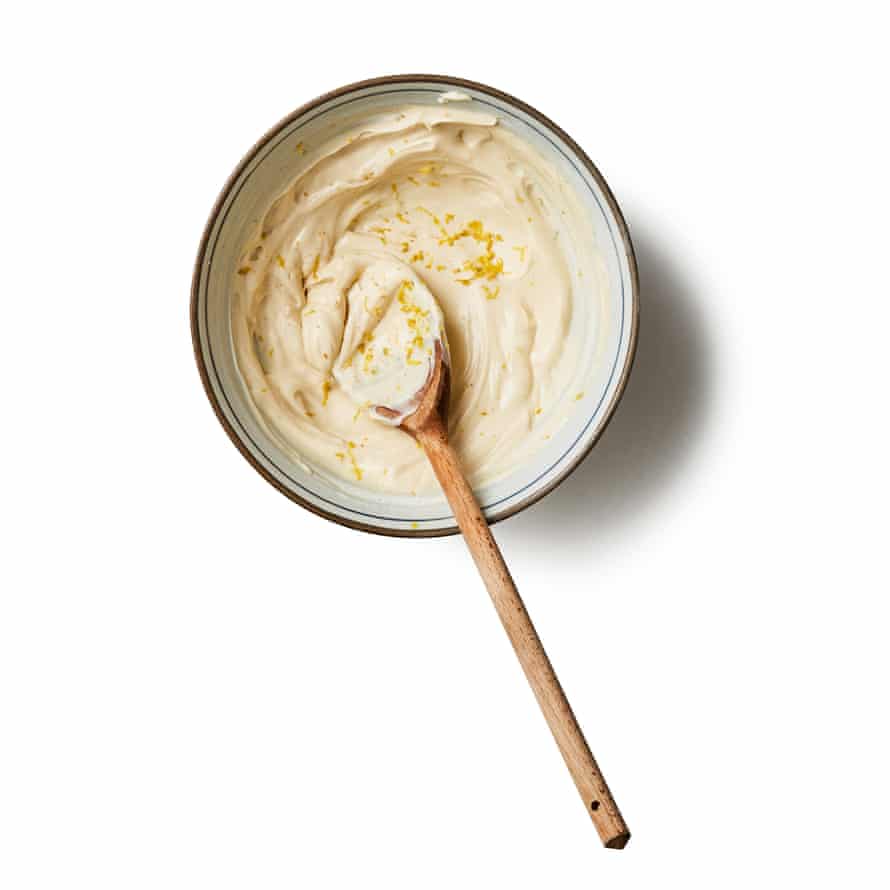
Break up any lumps in the cheese, then beat in the 50g remaining sugar until the mix has a slightly airy consistency. Add the finely grated zest of half the lemon (wash it first, as for the orange) and a squeeze of juice to taste; if the cream cheese is unsalted, you may want to add a pinch of salt, too. Refrigerate until ready to use.
8 Cool the cakes, then ice
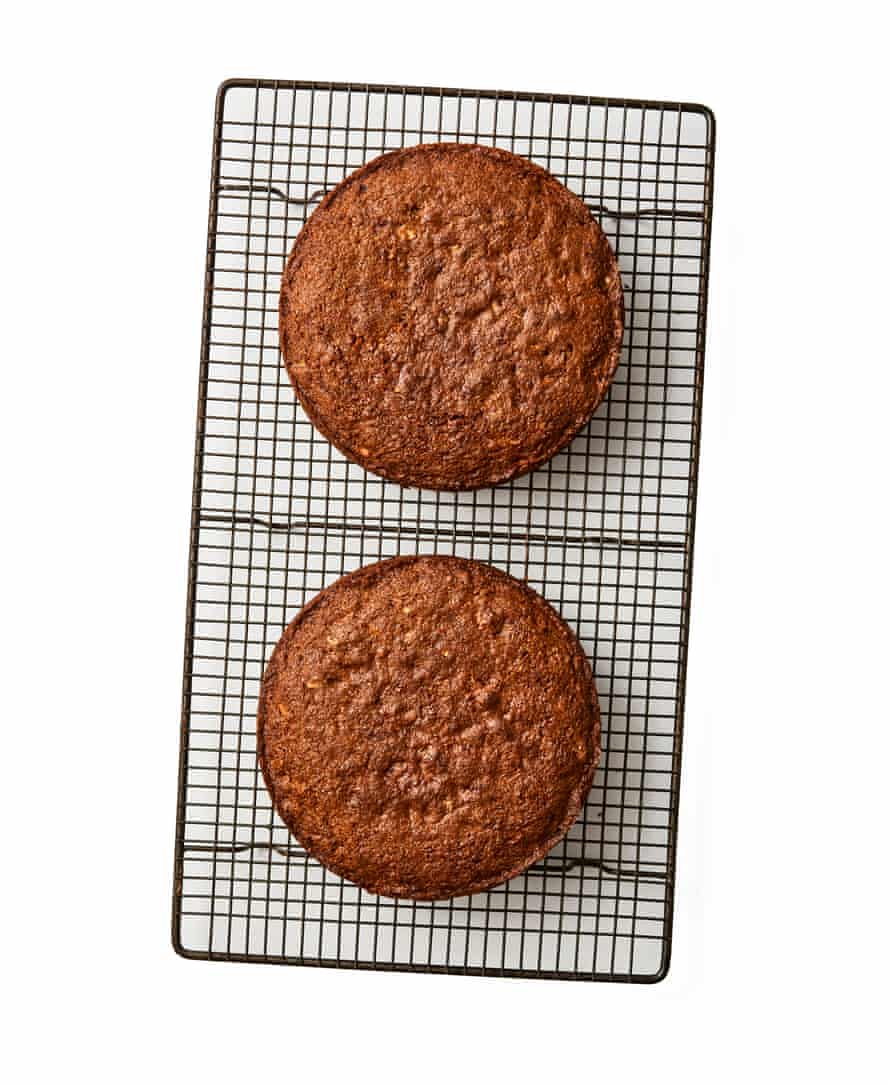
Once the cakes are ready, turn them out on to a rack to cool. Do not, under any circumstances, try to ice them until they are at room temperature, or the icing will melt. Once cool, put the less attractive-looking of the two halves on to a plate or cake stand, and top with just under half the icing, banking it up slightly around the rim.
9 Finishing touches
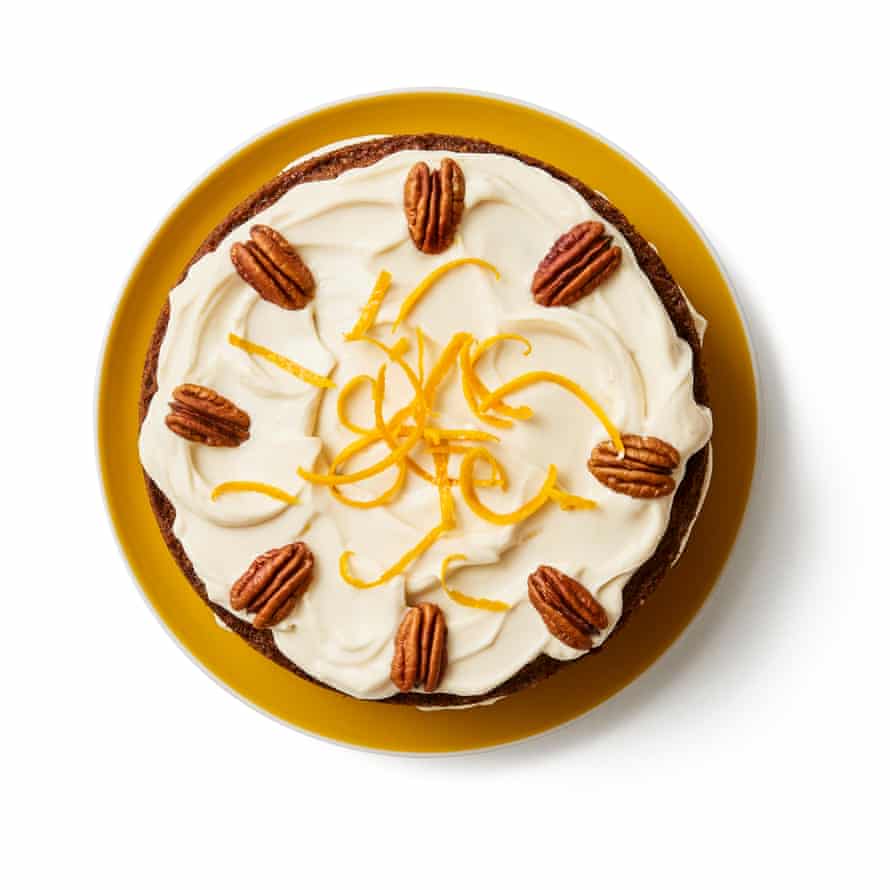
Put the other half on top, ice and decorate with the remaining toasted pecans in whatever pattern you choose. Though carrot itself quickly wilts once grated, a few strands of julienned orange zest look nice, or go all out, as I did once for a friend’s wedding, and strew the top with miniature fondant carrots and rabbits. Each to their own …



